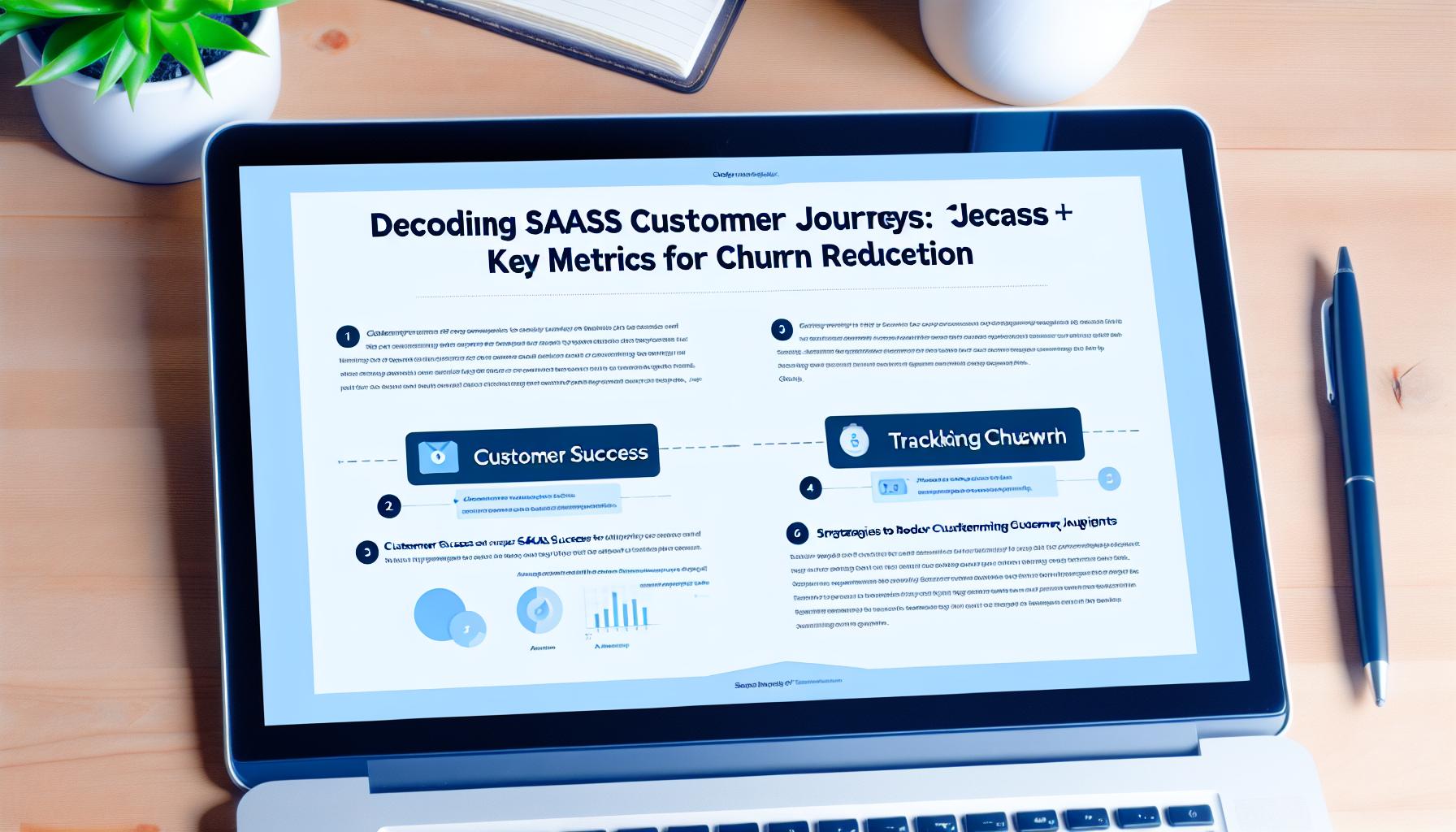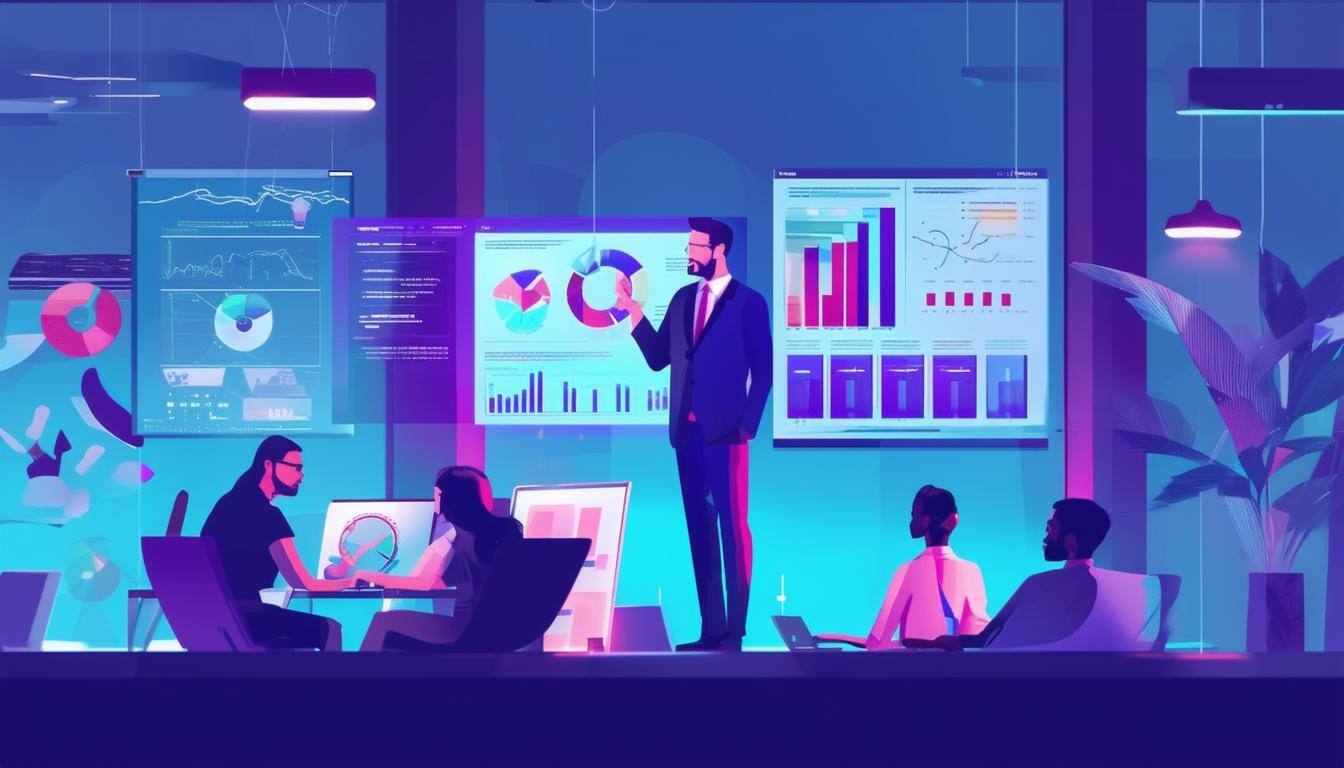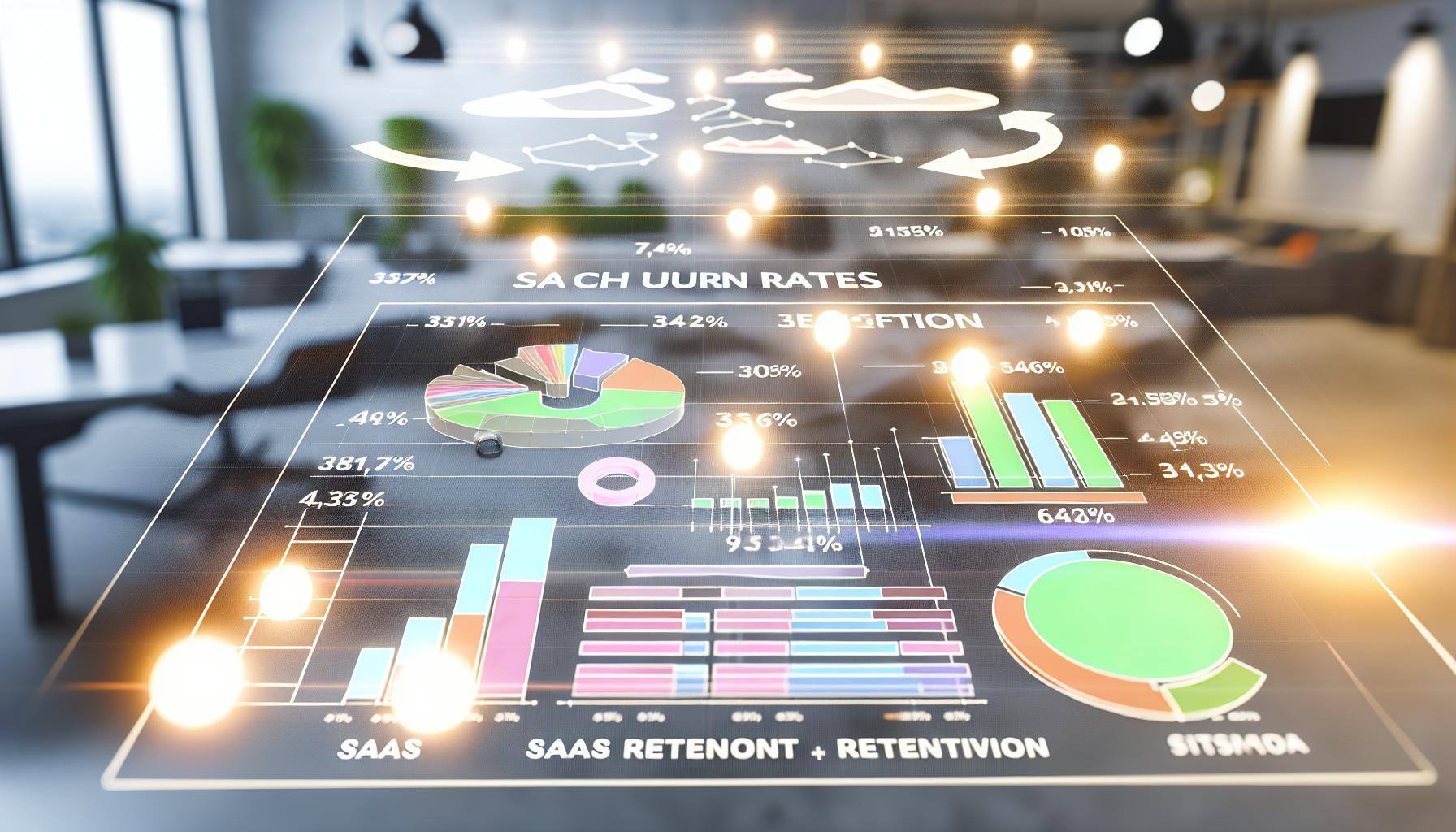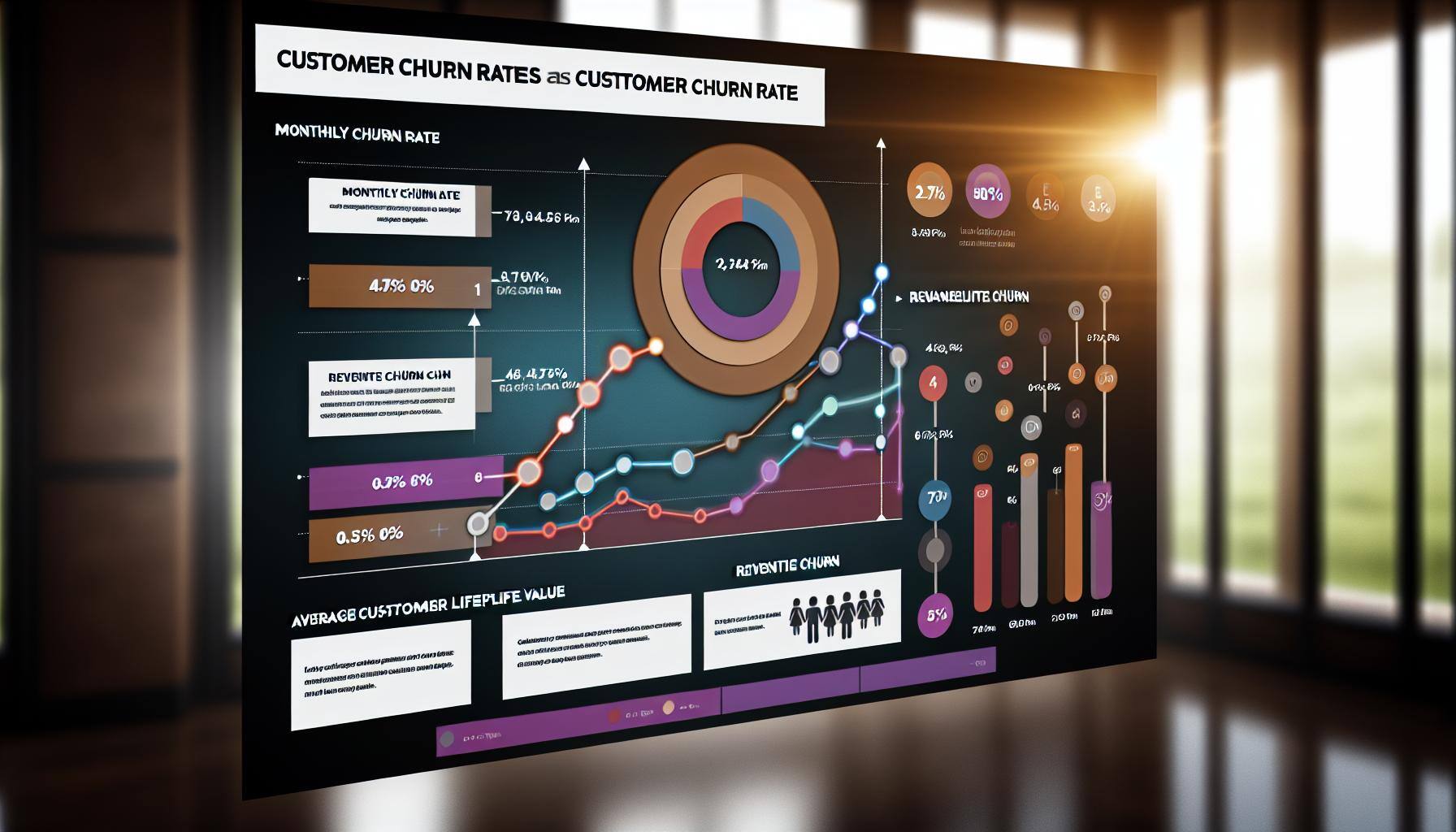Mastering Customer Success in B2B SaaS: Strategies for Retention and Growth
In B2B SaaS, keeping customers happy is the key to growing your business and making sure they stick around. By mastering customer success strategies,...
5 min read
Brian Polackoff
:
May 13, 2024 11:02:00 AM

Have you ever thought about how people decide to use a product or service? For companies that sell software, understanding their customers' journey is super important. Let's break it down step by step to see how they do it and what tools help them keep their customers happy.
When a customer thinks about using a new software product (called SaaS, which stands for Software as a Service), they go through several stages. For the purposes of an example, let's imagine the customer sees that their customers are cancelling their subscriptions at an alarming rate and they don't know why. They would like to address this somehow, but aren't sure what to do.
Before someone can become your customer, they need to know you exist. At first, they might not even realize they have a problem that needs solving. But once they feel the pain of losing customers, they start looking for solutions. At this point, they might explore things like churn prevention software or SaaS churn analytics to learn more. They may not be ready to buy yet—they just want information that helps them understand their problem better.
To reach these potential customers, we need to create content that speaks directly to their concerns. Blog posts, customer testimonials, and ads that show how our SaaS product can solve their churn problems can make a big impact.
Now that customers know about our product, they start comparing it to others. This is where we need to provide clear, easy-to-understand information about our features and benefits. Comparison guides, feature highlights, and case studies are all helpful here. Including real customer stories can show how our churn software has helped others in similar situations. For more on overcoming challenges and growing in the B2B SaaS space, check out Top 5 B2B SaaS Growth Challenges in 2024 and How to Tackle Them.
During this stage, customers are trying to narrow down their options. Sometimes, they focus on specific features that are important to them. For example, when I was buying a new truck, I made sure it didn't have a sunroof—who needs a sunroof in a truck? It's important to highlight our product's features and benefits clearly so customers can decide if we're the right fit for them. If we don't have what they're looking for, that's okay. But we don't want to lose them just because they couldn't find the information they needed.
Once a customer decides to buy, the onboarding experience becomes the most important factor in long term account health. Onboarding should be as smooth as possible. Guided tutorials, an onboarding specialist, and in-app tips can all help new customers feel comfortable and see value right away. The goal is to create early wins—moments where the customer realizes the product is making their life easier. Learn more about Best Onboarding Practices to Reduce Churn. A mix of guided and self-led resources can help newcomers get comfortable quickly.
Once customers are onboarded, it's important to keep them engaged. Regular communication is key. Automated, personalized emails to check in on usage, offer tips, or invite users to training sessions can help. We should also keep an eye on usage data—if we see drops in engagement, we can take action to re-engage customers. Consistent value is what keeps customers happy. For more strategies, see Mastering SaaS Churn: Strategies to Measure, Reduce, and Improve Customer Churn Metrics.
Depending on our style, we might reach out to customers directly to make sure they're getting what they need. Inviting them to learn about new features or checking in to solve any issues can go a long way.
Every application has different usage patterns, so it's important to understand what normal engagement looks like for ours.
When it's time for renewal, the customer's decision will depend on their entire experience so far. How smooth was the onboarding? Did they feel supported? Were they engaged? Offering renewal incentives like loyalty discounts or added features can help, but addressing any challenges the customer faced during their journey is even more important. For renewal best practices, check out The Ultimate Guide to SaaS Renewal Best Practices.
A happy, engaged customer is more likely to become an advocate for our product. Encouraging reviews, creating a referral program, and asking for testimonials are all good ways to turn loyal customers into advocates. Advocates are incredibly valuable because they bring in new customers who trust their recommendations. To learn more about fostering community success, visit Celebrating User Achievements: A SaaS Founder’s Guide. Most advocates don't need to be paid—they genuinely enjoy sharing what works for them. As long as we make the process easy and enjoyable, we can use advocates to help grow our business without spending a lot of money.
Throughout this journey, there are different points where customers interact with the company. These touchpoints are really important to ensure customers have a great experience:
Website and Content: When you're introducing your product to a potential customer, they may read blogs, watch videos, or check product pages. How effectively is your content helping them understand the product and its benefits?
Sales and Demos: During the consideration stage, your potential customers might talk to salespeople, watch demos, or even try a free version of the software. Are your sales interactions and demos effectively addressing their questions and concerns?
Onboarding and Training: When a customer starts using your product, they receive tutorials and guides. This helps them quickly understand the value. Are your onboarding materials making it easy for them to see immediate value?
Customer Support: Once a customer is using your product, they might need help. This is where your support team or Customer Success Managers step in. How effectively are you resolving their issues and providing the support they need?
Feedback Mechanisms: You collect feedback from your customers through surveys to understand how you can improve. Are you using customer feedback effectively to drive product improvements?
Companies want to know how happy their customers are. They use different measurements, such as:
Time-to-Value (TTV): This metric tells how quickly a customer starts seeing the benefits of the software after signing up.
Customer Satisfaction (CSAT) and Net Promoter Score (NPS): These are surveys that show how satisfied customers are.
Customer Health Score: This is a score that combines things like usage and feedback. If it’s low, churn prediction software helps companies find ways to make the customer happy again.
Churn Rate: This is a very important number that shows how many customers stop using the product. Companies use churn analytics to reduce this rate.
Companies use journey maps to understand each stage of the customer’s experience. These maps help them make improvements:
Identify Pain Points: If customers are quitting the product after onboarding, it may be because the process is confusing. You should have analytics in the product to help you find confusing areas.
Enhance Value Delivery: Knowing where customers struggle allows the company to provide extra help like tutorials or product tips, improving SaaS customer retention.
Personalize Engagement: Not all customers are the same. Companies use customer retention strategies for SaaS customers to offer personalized help to different types of customers.
Manage Retention Risks: If a customer looks like they might quit, Customer Success Managers can step in early, using data from customer retention analytics to prevent this.
Every part of a SaaS company needs to work together to make sure customers are happy. Journey maps help guide different teams:
Product Teams: They can see where customers are having trouble and work on features that help solve these issuess.
Sales and Marketing: They can make better materials, such as demos and blogs, based on what customers need at each stage.
Customer Success Teams: They use predictive customer retention models to offer help when it’s most needed.
Building a culture that genuinely puts customers first starts with understanding their journey at every step. Whether it's their first interaction with your product or they're a long-time user, every touchpoint matters. It's about embedding customer empathy into everything you do—from product development to marketing and support. Listen to customer feedback and make data-driven improvements that align with their needs. More importantly, proactively engage—reach out before problems arise and show a genuine interest in solving their challenges. When every team member takes ownership of customer success, customers can feel the difference.
Putting customers first isn’t just about metrics; it's about creating meaningful, long-term relationships built on trust. Encourage your team to think like your customers and empower them to take action that enhances their experience. Ask yourself: are your policies designed for customer convenience, or just for internal ease? By focusing on creating positive experiences rather than chasing quick wins, you lay the groundwork for advocacy, loyalty, and sustainable growth.

In B2B SaaS, keeping customers happy is the key to growing your business and making sure they stick around. By mastering customer success strategies,...

In the rapidly evolving world of Software as a Service (SaaS), understanding customer churn and retention is crucial for ensuring your business's...

Proven Strategies to Reduce SaaS Customer Churn What if preventing churn was like sealing leaks in a ship—each effort keeps you afloat and moves you...